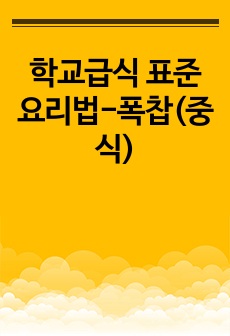Differences Between East-Asian and Western Emoticon Culture
- 최초 등록일
- 2015.01.05
- 최종 저작일
- 2013.12
- 11페이지/
 MS 워드
MS 워드
- 가격 4,000원

소개글
동아시아(한국, 중국, 일본)와 서양(라틴 알파벳 문화권, 러시아)의 이모티콘 차이를 얼굴 표정 읽기 차이에 기반하여 분석한 레포트입니다.
목차
1. Introduction
2. What is Emoticon?
3. East-Asian Emoticon
3-1. Korea
3-2. Japan
3-3. China
4. Western Emoticon
4-1. America (Countries Using Latin-Alphabet)
4-2. Russia
5. Reasons of the Differences
5-1. The Way of Writing
5-2. The Way of Reading Facial Expressions and Emotion
6. Conclusion
Reference
본문내용
In line with the development of IT (Information Technology) and Media, people have easily become to be situated CMC (Computer Mediated Communication) circumstance. For example, nowadays, we communicate a lot through only text massages of mobile or the Internet without face-to-face situation. In this situation, the functions of written language of visualization and delivery of emotion have effective role in the communication. However, with only written language, it is limited under CMC environment to deliver all massages and emotion which could be expressed in reality. Because people need not only verbal communication but also non-verbal communication such as facial expressions or vocal pitch.
<중 략>
Most countries using Latin-alphabet have very similar emoticon to American. American emoticon use horizontal images unlike Korean or Japanese which is vertical. In addition, they rarely use shapes such as such as ♥, ★, or ♪ because these shapes are scarcely match with horizontal face emoticons. In particular, they use <3 as ♥. Although some vertical face emoticons are occasionally found in Internet language, American people consider vertical emoticons as typical Asian emoticon.
참고 자료
Daum and MSN Instant Messenger. KIISE Workshop Presentation File. pp.87-92
Du-won Lee, (1995). Theatrical Research of Semiotic Phenomenological Human Communication Model Build. Korean Journal of Journalism & Communication Studies. 35, pp.71-105
Ji-su Kim, (2003). Research on the Differentiation Between Perceptions of Two Emoticons in
Myung-jin Kim, (2012). EBS Documentary East and West. 1st ed. : Ji-Sik channel.
Rachael E. Jack, (2012). Facial Expressions of Emotion are not Culturally Universal. PNAS. 109 (19), pp.7241-7244
Wikipedia. Paul Ekman. [ONLINE] Available at: http://en.wikipedia.org/wiki/Paul_Ekman. [Last Accessed 07 January 2014].




